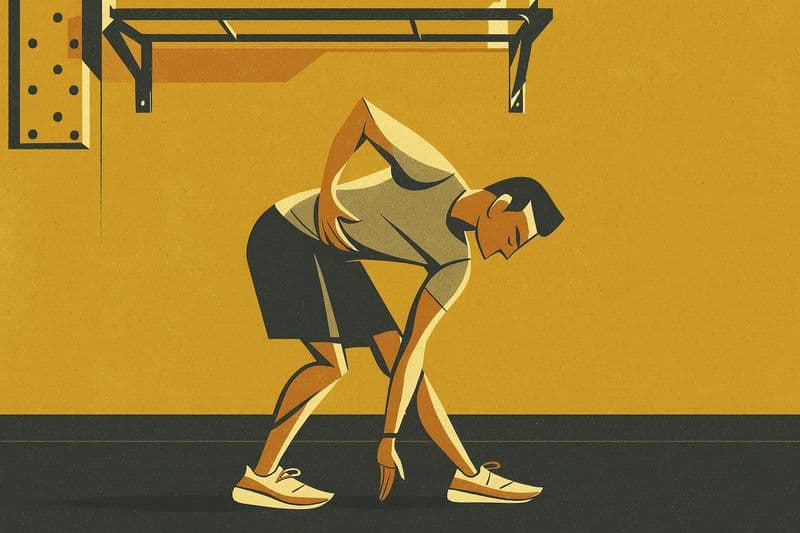
Introduction
Pickleball is easy to learn and fun for all skill levels. Here’s what beginners need to know to get started:
Gear Up: Start with a wooden paddle ($20-$30) and proper court shoes for safety. Add indoor or outdoor balls, depending on where you play.
Learn the Basics: Practice a solid grip, balanced stance, and focus on underhand serves. Stand ready to return shots with control.
Teamwork Matters: Move in sync with your partner, communicate clearly, and cover the court effectively.
Positioning & Strategy: Stay near the kitchen line for better control and adjust based on opponents’ habits.
Avoid Common Mistakes: Don’t rush to the net after serving, and focus on soft third shot drops over hard drives.
Practice Drills: Work on dinking, reflexes, and volleys to improve accuracy and consistency.
Find Coaching: Use platforms like TeachMe.To for private lessons or join local groups for practice.
Pickleball rewards strategy and precision over power. With the right gear, teamwork, and consistent practice, you’ll quickly improve and enjoy the game more!
How to Serve A Pickleball: Beginner's Guide
Pickleball Gear You Need to Start Playing
Having the right gear can make playing pickleball more enjoyable and help you improve faster by keeping distractions to a minimum. Luckily, you don't need to spend a fortune to get started.
Choosing the Right Paddle
The paddle is your most essential piece of equipment. If you're just starting out, a sturdy wooden paddle (around $20-$30) is a great choice to practice your technique. Once you're comfortable, you can switch to a composite paddle (priced between $50-$100) for better control and balance. For experienced players, lightweight graphite paddles (starting at $100) offer excellent precision and power.
Shoes and Clothing for Comfort and Safety
Proper footwear is a must. Look for court shoes with non-marking soles, good side-to-side support, and cushioning to handle quick movements. Pair these with lightweight, breathable athletic wear like shorts and moisture-wicking shirts to stay comfortable. A hat or visor can also help protect you from the sun during outdoor games.
Other essentials include a reusable water bottle to stay hydrated and sports goggles to protect your eyes. Make sure to use indoor balls for games inside and outdoor balls for rougher surfaces or windy conditions.
Once you're equipped, you can focus on building your pickleball skills and enjoying the game!
Learning the Basics of Pickleball
How to Hold the Paddle and Stand Correctly
Your grip and stance are the building blocks of a strong pickleball game. To hold the paddle, place your index finger behind the handle and wrap your other fingers around it. This grip gives you better control and stability for all types of shots.
When it comes to your stance, stand with your feet shoulder-width apart, keep your knees slightly bent, and distribute your weight evenly. This posture allows for quick, balanced movements and helps you react faster during play.
"Stay connected to your partner. Always move with your partner - whether that's moving laterally, back, or forward." - Jaci West Reynolds, Team ONIX Professional Pickleball Player
Tips for Serving and Returning the Ball
When serving, focus on hitting the ball in front of your body. Use your legs and core to generate power, keeping your motion smooth and consistent. A steady toss or drop is key to a reliable serve.
For returns, aim to place the ball deep in your opponent's court. This forces them to move back from the kitchen, making it tougher for them to execute their third shot, whether it's a drop or a drive.
"The deeper and more aggressive your serve is, the higher the possibility of getting an easier ball to hit a third shot drive or a drop." - Jaci West Reynolds, Team ONIX Professional Pickleball Player
Communication is just as important - use clear calls like "mine" or "yours" to coordinate with your partner. If your opponent keeps targeting one side, adjust your positioning to cover that area more effectively.
For both serving and returning, rely on your legs and core for power while keeping your upper body relaxed. This approach reduces arm fatigue and improves consistency. Start practicing at a slow pace to build accuracy, then gradually increase your speed as you gain confidence.
Getting these basics down sets you up for learning more advanced skills and strategies. With a solid foundation, you'll be ready to take your pickleball game to the next level.
Positioning and Strategy for Beginners
Once you’ve nailed the basics, it’s time to focus on positioning and strategy to step up your game.
Working with Your Partner on the Court
Good teamwork starts with moving as a unit. Stay within 6-8 feet of your partner, moving side-to-side, forward, or backward together to maintain strong court coverage. Communication is key - use short, clear calls like "me", "yours", "back", or "attack" to avoid mix-ups during quick exchanges. If your partner hits a crosscourt shot, shift laterally to cover the line while they focus on the middle.
Here’s a quick tip for better coverage:
When hitting crosscourt, position yourself to guard the middle while your partner covers the line.
For down-the-line shots, shift to protect the middle while your partner takes crosscourt.
On balls down the middle, the player with the forehand usually steps in to take the shot.
How to Read Your Opponent's Moves
Paying attention to your opponents’ habits can give you a real advantage. Watch for patterns like frequent lobs or consistently targeting one side of the court, then adjust your positioning to counter their strategy.
Staying close to the kitchen line helps you control the ball and create better shot angles. Adjust your position based on the situation: stay near the kitchen line for control, cover the sideline for crosscourt shots, and work with your partner to maintain strong middle coverage.
Keep an eye on your opponents' favorite shots and where they like to stand. If they repeatedly aim for one side of the court, strengthen that area. If they struggle with certain shots, use this to your advantage while keeping your court positioning solid.
Getting your positioning and strategy right is crucial for avoiding mistakes that can hold you back.
Mistakes Beginners Should Avoid
Steering clear of common errors can help you improve your pickleball skills faster. Let’s dive into two key mistakes that often challenge new players.
Why Rushing After Serving Can Backfire
A common misstep for beginners is hurrying to the kitchen line right after serving. While it’s tempting to move forward quickly, this can leave you exposed and out of position for the return shot. Instead, stay near the baseline after serving and wait for the right moment to advance.
Here’s why holding back is a smarter move:
Staying near the baseline improves your court coverage and gives you extra time to react to deep returns.
It helps you avoid getting stuck in the awkward middle ground between the baseline and the kitchen, often called "no man's land."
The Third Shot: Why a Soft Drop Beats a Hard Drive
Many new players try to blast their third shot with a powerful drive, but this often leads to mistakes and lost points. A better option? Go for a soft drop shot that just clears the net. This approach slows the pace, minimizes errors, and sets you up to move toward the kitchen line.
A well-executed third shot drop can:
Help you control the tempo of the game.
Open up chances to move forward.
Reduce unforced errors.
Improve your positioning alongside your partner.
The key is to focus on patience and precision rather than relying on power. Miscommunication with your partner and poor positioning can make these errors worse, so stay coordinated and alert.
When practicing your third shot, aim to arc the ball gently over the net. This technique builds control and consistency, giving you a solid foundation to elevate your game.
Practice Drills to Improve Your Game
Improving your pickleball skills takes dedication and regular practice. Adding these drills to your routine can help you fine-tune your techniques and prepare for advanced strategies as you progress.
Drills to Improve Dinking
The dink shot is a key skill for controlling rallies and staying strong at the net. To work on dinking, stand at the non-volley zone (NVZ) line with a partner and focus on hitting soft, controlled shots that just clear the net. Keep your paddle steady, aim to keep the ball low, and focus on a smooth rhythm. Start with a goal of 10 consecutive dinks and increase the target as you get better. Pay attention to maintaining a controlled follow-through with your paddle.
"The key to improving your reflexes is consistent practice with increasing difficulty", says The Pickler. "Start with slower-paced volleys and gradually increase the speed as your confidence grows."
How to Train Your Reflexes and Volleys
To sharpen your reflexes, practice with a partner standing 15 feet away. Have them send balls at different speeds and angles while you focus on staying in a ready position, reacting quickly, and aiming your returns to specific areas of the court. As your accuracy improves, gradually increase the speed of the shots.
For the best results, spend 15-20 minutes on these drills during each session. Add side-to-side shuffling to mimic real match scenarios while maintaining proper form.
Regular practice with these drills will help you build a strong foundation and improve your game. If you want more tailored advice, consider working with a coach to fine-tune your skills.
Where to Find More Help and Coaching
If you’re ready to take your pickleball skills to the next level, there are plenty of resources to guide you. With pickleball growing rapidly - participation jumped by 39.3% between 2020 and 2022 - there’s no shortage of options for beginners looking to improve.
Learn Pickleball with TeachMe.To

TeachMe.To offers private lessons starting at $40, connecting you with experienced coaches who tailor sessions to your skill level. These lessons focus on personalized feedback and proper techniques, helping you build a solid foundation.
But private lessons aren’t your only option. Here’s a quick comparison of different learning methods:
Learning Method | Average Cost | Benefits |
|---|---|---|
Private Lessons | $40-80/hour | One-on-one coaching, tailored feedback |
Group Clinics | $50-200/clinic | Learn with others, structured sessions |
Community Programs | Free-$30/month | Consistent practice, peer interaction |
Combining different approaches can boost your progress. For instance, use TeachMe.To for focused, one-on-one instruction while joining local clubs or community programs for regular practice and social play. Recreation centers and sports facilities often host group activities that can fit your schedule and skill level.
With these tools and opportunities, you’ll be well on your way to improving your game and gaining confidence on the court.
Wrapping Up: Tips for Starting Strong
Starting your pickleball journey can be exciting and rewarding. With the right approach, consistent effort, and a focus on the basics, you'll quickly build skills and confidence. Let’s break down the key areas to focus on.
Gear and Preparation
Make sure your paddle and footwear are suitable for both safety and performance. The right equipment can make a big difference. Also, practice working with your partner to improve teamwork and court coverage - this builds a strong base for better gameplay.
Sharpening Your Strategy
Winning in pickleball isn’t just about hitting the ball hard. It’s about combining these three key elements:
Teamwork and positioning: Stay in sync with your partner to anticipate shots and cover the court effectively.
Clear communication: Talk with your partner to stay coordinated and avoid missteps.
Opponent analysis: Pay attention to your opponents’ patterns and adjust your tactics accordingly.
Practice Makes Progress
Set aside time for drills that focus on specific techniques. Gradually increase the difficulty as you improve, and set small, manageable goals to measure your progress. This helps you stay motivated and see real improvements over time.
Play Smart, Not Just Hard
Accuracy and placement often matter more than sheer power. Aim for well-placed shots and adapt your strategy based on how your opponents play. Pickleball rewards thoughtful, strategic moves over brute force.
With regular practice and a strong focus on these basics, you'll notice steady improvement. Plus, as your skills grow, so will your enjoyment of the game. Keep at it, and you'll be well on your way to mastering pickleball!
FAQs
Starting pickleball comes with a few questions. Here’s what you need to know to get started confidently.
What’s the best pickleball paddle material for beginners?
For beginners, paddles with a polymer core are a great choice. They offer a good mix of durability, control, and power, helping new players develop their skills while adapting to different shot types.
How do I pick the right paddle size?
A standard paddle size - typically 8x15 inches - is a solid option for beginners. It provides a larger sweet spot and balanced weight, making it easier to control and handle during play.
What gear do I need besides a paddle?
You’ll need a few essentials: court shoes for grip and stability, breathable athletic wear for comfort, and the right balls for either indoor or outdoor games. These basics will set you up for a smooth experience on the court.
How can I improve my serve?
Here are a few tips to sharpen your serve:
Keep the ball close to your body when hitting.
Use your legs and core to generate power.
Focus on smooth, relaxed movements.
Practicing regularly will help you develop consistency and build muscle memory.
How do I work well with a partner?
Good teamwork comes down to clear communication, staying in sync, and letting the forehand player take shots in the middle. Practice these strategies during casual games to build chemistry before stepping into competitive play.
Where can I find coaching or resources?
You can improve your skills through private lessons, group clinics, or online tutorials. Platforms like TeachMe.To offer structured coaching to help you take your game to the next level.



